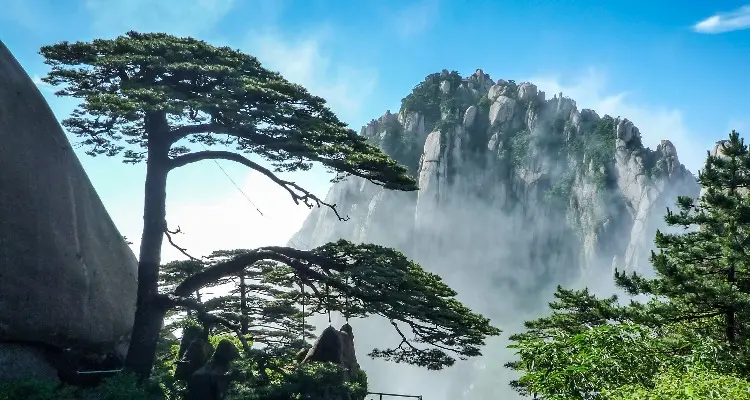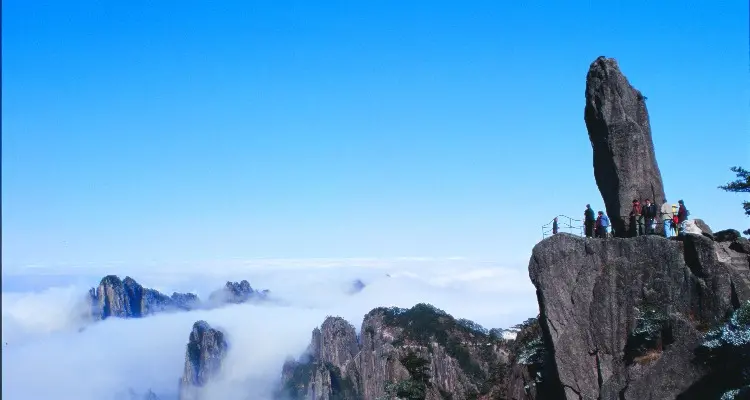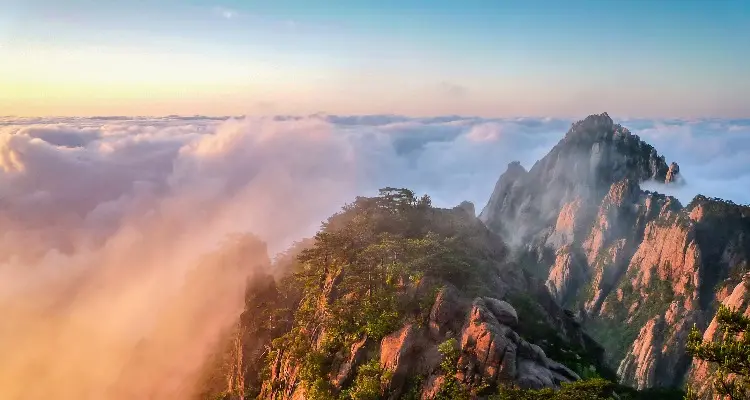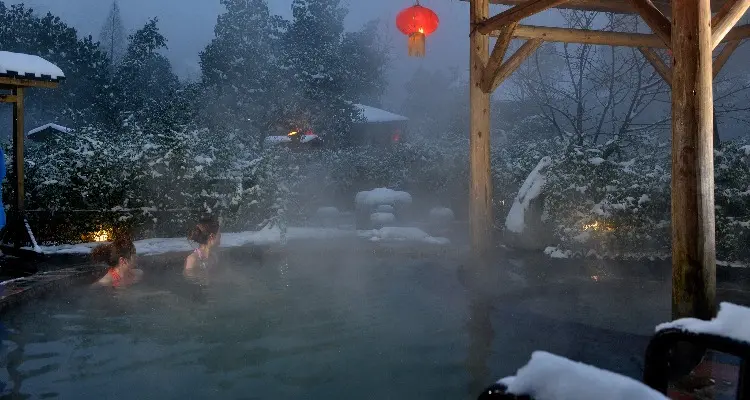- Chinese: 黄山 Huángshān /hwung-shan/; huang means ‘yellow’ and shan means ‘mountain(s)’
- Entrance fee: CN¥190/US$30
- Things to do: Enjoy hot springs, photography, and hiking
- Must sees: peculiar pines and rocks, seas of cloud, hot springs, sunrises and sunsets
- Suggested visit: 2 days
- Location: about 50 km (30 miles) north of Huangshan City, Eastern China.
- Transport: Bullet trains from Hangzhou (1½ hours) and Shanghai (2½ hours).
- Highest peak: 1,864 meters / 6,116 feet
Highlights That Brighten Your Visit

- Imaginatively-named pines
- Oddly-shaped rocks
- Seas of cloud
- Hot springs
Xu Xiake, a noted Chinese geologist in the Ming Dynasty (1368–1644), who visited the Yellow Mountains twice, left his praise in this quote:
“You don’t need to see any more mountains after seeing ‘the Five Mountains’, and you don’t need to see the other four mountains after seeing Huangshan.”
Explore all the highlights with 3-Day Ancient Villages and Yellow Mountain Tour >>>
Imaginatively-Named Pines
Yellow Mountain pines are particularly hardy, seeming to twist directly out of the smooth rock. Many old pines have been named according to their appearance or some legend about them.
Greeting Guest Pine is the most famous pine in the Yellow Mountains, and doubtless in all of China. It is located on the east side of Jade Screen Peak, by Wenshu Cave. The 10-meter-high (33-foot-high) tree grows like a man standing by the path and stretching out his hand to guests in a greeting gesture. Many Chinese hang a poster of Greeting Guest Pine in their living rooms and restaurants as a decoration.
Read more about the pines of the Yellow Mountains.
Oddly-Shaped Rocks
 Flying-Over Rock on the Yellow Mountains
Flying-Over Rock on the Yellow MountainsLikewise, the oddly-shaped rocks of the Yellow Mountains get their names not only from appearance but also from legend. Each rock’s name has a story, which gives the rock “life”.
Flying-Over Rock is one of the most famous boulders in the Yellow Mountains. The 12-meter- (39-foot-) high rock leans like javelin flown-in on a huge rock ledge. The contact area is very small which makes it more amazing.
Read more about the oddly-shaped rocks of the Yellow Mountains.
Seas of Cloud: Frequently Seen Between November and May
 The seas of cloud on the Yellow Mountains
The seas of cloud on the Yellow MountainsThe seas of cloud have contributed much to the ethereal atmosphere of the Yellow Mountains, making peaks look like islands in the sky. The best time to appreciate this phenomenon is from November to May, especially after rainy/snowy days, at sunrise or sunset.
There are hundreds of peaks and thousands of ravines in the Yellow Mountains, but five seas of cloud are named: North Sea, South Sea, East Sea, West Sea, and the Heavenly Sea (in the middle). Celestial Capital Peak (1,800 m / 5,900 ft), Lotus Peak (1,873 m / 6,145 ft), and Bright Top (1,841 m / 6,040 ft) are the three tallest peaks, and best locations to see the stunning seas of cloud.
Buddha’s Light — a Rarely Seen Extra Wonder
Buddha’s Light is an optical phenomenon like a halo surrounding the observer’s shadow, once thought to show the observer’s enlightenment. It only can be seen when the observer is between the sun and a cloud, which is around 40 times a year. You have to visit the mountain on a sunny day and get above a sea of cloud. Buddha’s Light is most likely to appear between 3 PM and 4 PM at Jade Screen Peak, Celestial Capital Peak, and White Goose Ridge.
Hot Springs: a Bonus for a Winter Visit
 Enjoy a hot spring after hiking on the Yellow Mountains in winter.
Enjoy a hot spring after hiking on the Yellow Mountains in winter.At the foot of the Yellow Mountains, you can find some famous hot spring hotels, on whose grounds are the hot springs. In the cold of winter, relax your muscles and warm your body in a hot spring after a day’s hiking.
Hot springs not only relax you from the tiredness of climbing, but also have the function of healing and restoration. It is said that Huang Di (the Yellow Emperor) bathed in the hot spring and became younger. So, the springs are also called the Springs of Youth.
https://www.tiktok.com/@chineseprincess0923/video/7172139023035780398